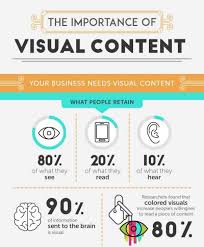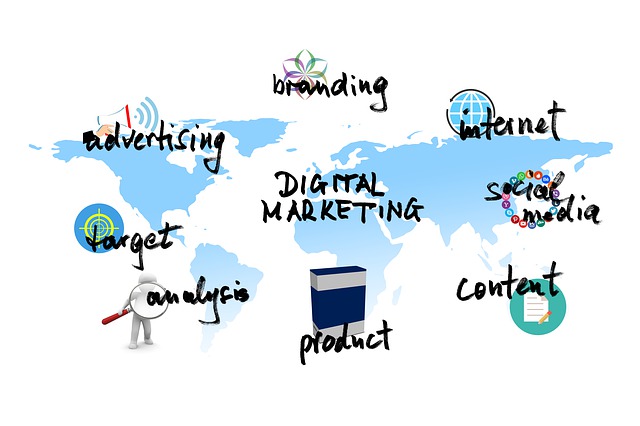
Video aggregators make it easy to manage the many videos you have. They provide search capabilities, recommendations, billing, and billing. You can even use them to find videos related to a specific topic. Although choosing the best one is up to you, there are some principles that you can follow when choosing a video aggregator. Below is a comparison between some of the most well-known video aggregators.
How to organize a lot of video content
As SVOD subscriptions rise, so does the need for an aggregator. With over 1.74 Billion video subscriptions worldwide, consumers will need help to navigate the massive amount of content. There are many types, including disruptors like Amazon and established players like Pay TV. All players agree that aggregation will be essential for the future of video as it provides a single point for billing consumers and economies for providers.
A number of factors impact the need for an aggregater. First, consumers expect convenience and customization of their video content. They want something that suits their preferences. Hence, streaming services have increased their efforts to make this possible. These consumers can benefit from AVOD aggregators by having short clips assembled and packaged that are relevant to them.
Producers also have a number of benefits from aggregators. Aggregators can negotiate better deals and help smaller films find theatrical releases. Aggregators are also able to help smaller films find digital distribution options in non-traditional markets. It is important to not confuse film aggregators with video hosting websites. They act as an intermediary between creators & distributors, providing marketing, localisation, and technical support.
Although streaming services are growing in popularity, consumers are not satisfied with their user experience. As more big names enter the space, consumers will find it difficult to find and watch their favorite content. Video aggregators will be an important tool in facilitating flexibility and personalization. Accenture has found that more people would prefer to see their favourite content on one platform than multiple.
Search
The need for a video aggregator that makes it easy for consumers to find and consume content is increasing as SVOD subscriptions increase. A survey of subscribers to pay TV found that 62% got frustrated trying to find the content they wanted. This frustration has been decreasing over the past five-years as operators developed search and recommendation capabilities to address subscribers' frustrations. This area is currently seeing several new approaches.

The streaming video market has many problems. There are many streaming content providers, each with their own apps. This makes it difficult to find the right content. Intellectsoft designed an app that aggregates content from various providers and indicates which platforms they are available. These video aggregators are now widely available and are an excellent resource for finding the content you're looking for.
This model is both the most simple and the most profitable, but it's also the most difficult to make commercially. Many video aggregators struggle to obtain metadata rights and don't own the content they host. Some resort to scraping instead. In addition, video aggregators' revenue models are often limited by their inability to include banner advertising and revenue sharing. This can limit their ability to achieve the popularity they desire.
Use news aggregators to help you find the latest news. These tools can also help you find videos on a specific topic. Video aggregators with the best results automatically curate stories for users. Google News is a great example. It automatically curates stories and provides users with the latest news. Google News gathers the latest news and also collects stories form different sources.
Recommendations
Video aggregators were born out of the rising popularity of SVOD. Many people are frustrated by the difficulty of finding and accessing SVOD content. A survey has revealed that more that half of pay-TV subscribers find it difficult to find the content they want, a figure that has fallen over the last five. Some aggregators rely solely on super-aggregators. Others have a core company. All of them will play an important role in certain market segments, regardless of their respective focus.
As OTT services become more popular, the problem becomes more complex. In addition to requiring subscribers navigate multiple services, each service comes with its own credentials as well as payment systems. This makes matters even more complicated as video aggregators must obtain metadata rights to their content. These aggregators have limited revenue models, which often leave little room for revenue sharing or banner advertising.
Video aggregators offer several benefits. Many are very easy to use as the bulk of the aggregation process happens automatically. These tools offer a search engine for streaming services and reduce the friction of searching on multiple websites. This makes them more affordable for consumers. Here are some top video aggregators.
Indie films cannot be released without the help of film aggregators. They can help filmmakers find their films on major VOD platforms and iTunes by placing them on these platforms. Though some bad actors have masked as reputable video aggregators, there are still some benefits for filmmakers. One, they can help them improve their skills and target younger audiences.
Billing

As the global SVOD marketplace grows, so does the number of SVOD users. With nearly 1.74 billion subscribers globally, consumers will need help finding the content that they want. There are many roles for billing video aggregators. Some are purely aggregators and serve an established industry, such as Pay TV operators. But, in general, they all play important roles in certain segments. Listed below are some of the most popular.
This is the most simple model, but it's also the most difficult to commercially implement. Many video aggregators do not host their own content and struggle to obtain metadata rights from content providers. Some resort back to scraping. The other problem with aggregation revenue models are that services might not be interested to display banner ads or participate in revenue-sharing. The latter two revenue models have several advantages.
Consumers can also use billing video aggregators for multiple subscriptions. However, subscribers can have easier access to more video content. According to recent research, 62% of subscribers to pay TV often have difficulty finding what they are looking for. This is why Aggregation Services are designed to solve the problem. They simplify managing multiple subscriptions, increase account management, and suggest content.
The Aggregation Fees vary widely. They are usually around $1K for a feature-length film. Other fees may be lower. Some aggregators might offer a revenue sharing model that reduces upfront fees. Others may offer discounted rates on Compressor and other assets. Some of these companies offer Compressor user discounts and can even create assets for them. These costs might not be offset by the platform's many benefits. How can you tell if a particular platform works best for you.
FAQ
Where can I find my keywords
Consider what type of products or services your company offers and who your ideal customer might be before you start looking for standard terms. Once you've got your list of phrases, you can use tools like Google Keyword Planner to see what phrases people are searching for or go directly to popular search engines like Bing, Yahoo, and DuckDuckGo.
What is an SEO campaign?
Content is the most important aspect of any website. If you don't have relevant and useful information on your site, you won't rank high enough for searches.
SEO campaigns help optimize your site by obtaining links back from other websites. It also includes social media SEO, which is the use of Twitter, Facebook, LinkedIn and LinkedIn to increase brand awareness and drive traffic.
These will help bring more visitors to your website and improve your rankings. SEO campaigns' main goal is to build quality links back on your site, so that Google can recognize that your website has value.
How often does SEO need to be done?
It doesn't matter how well you keep your links maintained. You don’t have to do regular SEO campaigns. However, if you stop maintaining your links and rely solely on organic traffic, you could lose out on potential business.
Small businesses are advised to have their SEO updated monthly. If you are a larger company, it may be necessary to update your SEO every quarter.
Link Building can improve my rankings
Link building is the process that creates high-quality backlinks for your website. It's essential to ensure that the sites linking to yours are relevant to your business. The more unique and authoritative the link appears, the better.
Statistics
- 64% of marketers actively create SEO campaigns because they help hit multiple key performance indicators (KPIs), including increasing traffic, helping your site rank for relevant keywords, improving your conversion rate, and much more. (semrush.com)
- These guides are designed and coded 100% from scratch using WordPress. (backlinko.com)
- Which led to a 70.43% boost in search engine traffic compared to the old version of the post: (backlinko.com)
- If two people in 10 clicks go to your site as a result, that is a 20% CTR. (semrush.com)
- : You might have read about the time that I used The Content Relaunch to boost my organic traffic by 260.7%: (backlinko.com)
External Links
How To
How do I know when I'm doing good SEO?
There are several ways you can tell whether or not you're doing great SEO:
-
Your bounce rate should be less than 30% - users leave your page without clicking on anything else. A high bounce ratio means that your audience does not trust your brand, or is not interested in the products you are selling.
-
People visit multiple pages on your site - this shows that visitors are engaging with your site and finding something useful.
-
Your conversion rate keeps improving. This is because your audience is becoming more aware of your products or services and wants them to buy them.
-
The average time spent on your site is increasing. People spend more time viewing your content.
-
Searches are attracting more people - this is a sign that your SEO is doing a great job.
-
You are receiving more shares on social networks - this means your content is being shared and reaching other audiences than your followers.
-
You get more comments on forums, which shows that people are responding positively to your work.
-
Engage more with your website by getting more likes (tweets), shares, likes, and likes for posts.
-
Your rank in SERPs has been increasing, which is a sign of your hard work paying off.
-
You are receiving more leads through your website. This indicates that people found your website by accident and are now contacting it.
-
Your sales are rising - this is a sign that people who found your website while searching for your services and products are buying them.
-
You get more views and comments on your blog posts, which means that people find your content useful and interesting.
-
You get more subscribers to your email list - this shows that people trust you enough to subscribe to receive updates about your business.
-
The sales are increasing - this means that people are liking your products and are willing to pay more for them.
-
You've gained more social network followers, which shows that your fans share your content with others and engage with your brand.
-
This means that journalists are talking more about your brand online. This can increase your company's visibility and your reputation.
-
This means that your brand is being recommended more often.
-
People keep returning to your website - this shows your customers are happy with your work and will come back again the next time they need your help.
-
Your competitors are losing market share - this means they didn’t invest as much in their SEO campaigns.
-
Your brand's image changes - this indicates that your brand has gained popularity among a new set of customers.